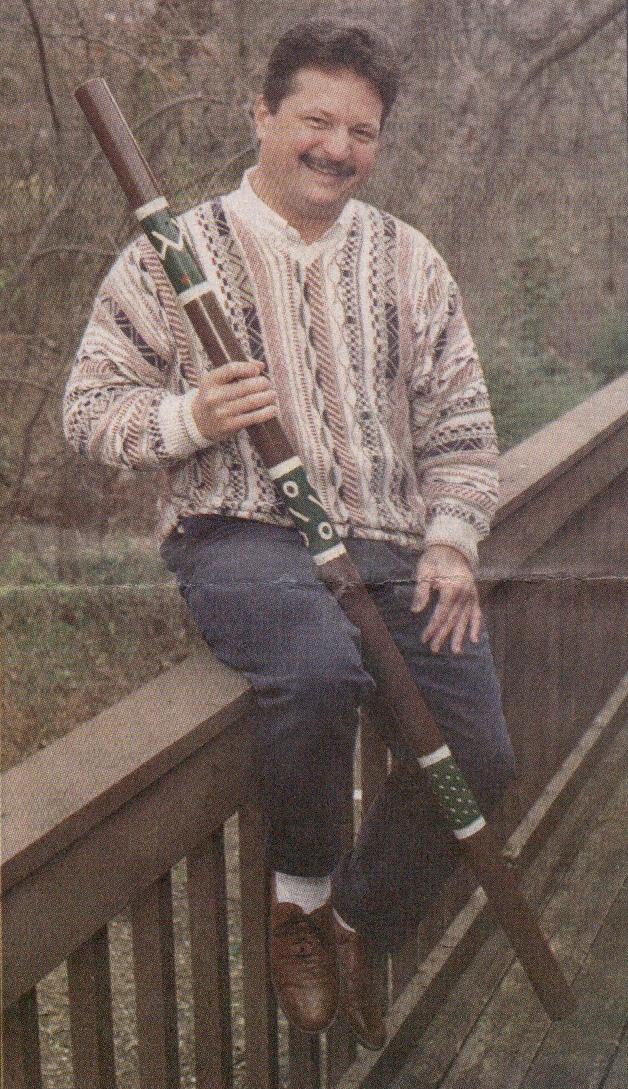
I really enjoy the didgeridoo. Not just because it is the most ancient of all musical instruments. But also because of its simplicity; by its nature it is in harmony with nature. Its sound is meditative and soothing, like a gentle wind brushing your cheek.
The didge is the model of the mathematics of music. Its length determines the pitch and harmonics. Its beauty of form is only surpassed by its remarkable haunting sound.
Its simple to make and even easier to play. Here are the steps for making
one out of PVC pipe. Not counting decorating time, you can make one in about
an hour. Make a few in different pitches and you can have a didge band!
It's easy. Use either a 1", 1 1/4", or 1 1/2" PVC pipe. If you making it for one of your kids, you might want to use 3/4". I've made a few and they are as much fun to make as they are to play.
A didge is a musical instrument and should be tuned. Cut it to the length for the fundamental tone you want it to make. The basic equation shows the relationship between length and frequency:
length = velocity / (2 * frequency)
where velocity is the velocity of sound in air, about 1087 ft/sec, or more conveniently 13,044 inches/sec.
With respect to the standing wave physics of an open pipe, the radius of the pipe is normally subtracted from the length of the pipe. This is because the node for the tone (and its harmonics) are just outside the opening of the pipe.
However in practice, when playing your lips will protrude into the pipe
about that much. Thus, no shortening of the pipe is necessary. Use the table
below to compute the length of pipe to use:
| Note | Frequency(Hz) | Length(inches) |
|---|---|---|
| A | 55.000 | 118.582 |
| B | 61.735 | 105.645 |
| C | 65.408 | 99.713 |
| D | 73.415 | 88.837 |
| E | 82.408 | 79.143 |
| F | 87.308 | 74.701 |
| G | 98.000 | 66.551 |
| A | 110.000 | 59.291 |
| B | 123.470 | 52.823 |
| C | 130.815 | 49.857 |
| D | 146.830 | 44.419 |
| E | 164.815 | 39.572 |
| F | 174.615 | 37.351 |
| G | 196.000 | 33.276 |
| A | 220.000 | 29.645 |
| B | 246.940 | 26.411 |
| C | 261.630 | 24.928 |
| D | 293.660 | 22.209 |
| E | 329.630 | 19.786 |
| F | 349.230 | 18.675 |
| G | 392.000 | 16.638 |
Cut the pipe to length as cleanly as possible using a hack saw. Sand away all of the rough edges, paying particular attention to the end that will be the mouthpiece.
For pipe diameters greater than 1" it is convenient to shape the end so that it fits snugly over your mouth, or most of your mouth. This means that it shaping will be sort of a saddle shape.
Once its sanded smoothly you are ready to play ~ BUT WAIT!
Make your didgeridoo into a work of art. Paint the outside with images of your home, family, or other beautiful and harmonic thoughts. I recommend not painting the mouthpiece since this will be in contact with your skin. Any paint that is accidently put there is easily removed with a little sandpaper. Of course paint the other end, even the inside.
Now you are ready...
Listen to me play my didgeridoo